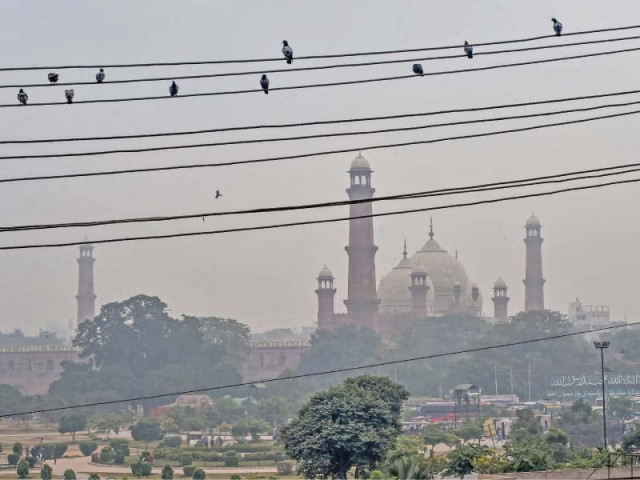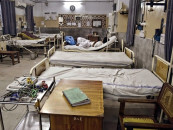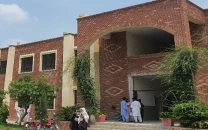Schools close for two days as air quality worsens in Punjab
As air quality readings of various cities in the province are nearly 3x higher than what is considered to be safe

Schools close for two days as air quality worsens in Punjab
A notification issued by the government stated, “In the wake of dense smog, public and private schools operating within the territorial limits of Lahore, Faisalabad and Gujranwala districts will remain closed on November 15 [today] and 16 [tomorrow]”.
Lahore’s air quality still ‘hazardous’
Official data released by the Punjab Environment Protection Department (EPD) ranked air quality in the provincial capital within the moderate range during the past 24 hours; the air quality index (AQI) was recorded as 236.
However, the numbers showed a bleaker situation in northern areas of the city. In Wagha, an AQI of 422 was reported during the same period.
Similarly, data from AirVisual, a global air monitoring giant, shows that air quality in Lahore has deteriorated over the past few weeks. The atmospheric particulate reading for the city has been recorded as over 160 microgrammes per metre cubed.
This means is that the city’s atmosphere is saturated with fine particles which tend to stick around in the air for a longer time, increasing the chances of them being inhaled by humans and animals.
Because of their minute size, particles smaller than 2.5 micrometres are able to penetrate deep into the lungs and may even enter the circulatory system.
Jehangir Khan, an environmental technologist monitoring the environment in different areas of Punjab, highlighted that the air quality readings of different cities in the province are nearly three times higher than what is considered to be safe.
“Because of poor enforcement of environmental laws and the irresponsible attitude of our industries, the air quality of all industrial, commercial cities and urban centres is worse than that of the rest of the province,” he said. He explained that burning of wood, coal, crop residue and tyres is a major source of atmospheric particulate matter, which contributes to smog and other kinds of pollution. “Cement and steel mills and brick kilns are major contributors of environmental pollution in Punjab,” he said.
Because of inadequate and poor implementation and enforcement of environmental laws, most industries are able to get away with burning tyres, cloth and animal waste during the night which masks the pollution. “Another major contributor is the large amount of vehicle currently on the roads, especially in urban centres,” he said.
Lahore Division Commissioner Asif Bilal Lodhi underlined that smog has become a serious challenge for urban cities such as Lahore, Kasur, Nankana Sahib and Sheikhupura. He expressed the need for a remedial and preventive strategy against smog. Further, he directed the environment, traffic police, information and transport department as well as district administrations to put their energies towards curbing smog and raising awareness among the masses.
Smog soars to alarming level in Lahore
He claimed that up till now, 12 environment teams were working under the anti-smog campaign in Lahore. However, now 36 teams will be active in Lahore from Thursday. Teams will also check vehicles entering the city at night. The traffic police and all 18 zonal officers of the Metropolitan Corporation Lahore will also assist them, he added.
A zero-tolerance policy has been adopted on burning crop remains and emissions from brick kilns, vehicles and industrial units. He stated that the crackdown against brick kilns which have not been shifted to zigzag technology will continue.
Published in The Express Tribune, November 15th, 2019.



















COMMENTS
Comments are moderated and generally will be posted if they are on-topic and not abusive.
For more information, please see our Comments FAQ